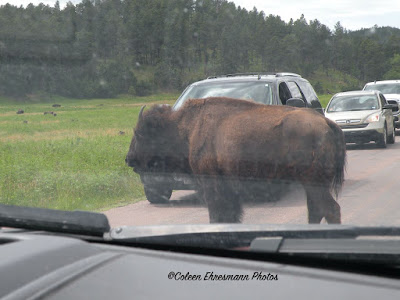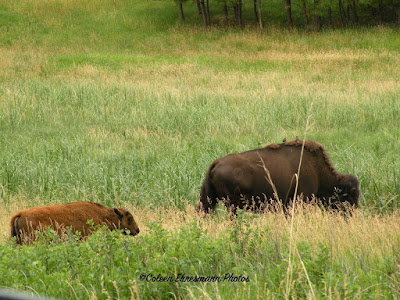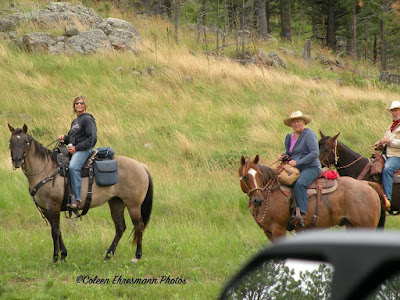This is the season when the bulls are off either solo or in small groups, leaving the cows and calves to do their own thing.
this was a group of 4
grazing and not paying any attention to us
the first herd of cows and calves off on a hillside
traffic jam at the campground
male mountain goat
and his female companion
still wearing some of her winter coat
antelope off by himself, grazing the hillside
one of the park's resident burros
A December 2017 fire burned 84 square miles in the state park and caused harm (dehydration, hoof damage, facial swelling, and burns) to all nine of the park's burros. Six of them received veterinary care and were nursed back to health and returned to the park the following spring; three had to be euthanized. Four more burros who once lived in the park were donated back to increase the herd of begging burros. Unfortunately one of the burros was bitten by a rattlesnake and died in the summer of 2018. The herd began to increase when a baby burro joined the herd that summer.
We saw at least two babies, an indicated by my photos. You can see the burros are very popular with the tourists. And the donkeys seemed to appreciate all the petting and attention they were receiving from the old and young visitors.
"The park's history with burros — which are really just small donkeys — dates to at least the 1920s, when they were used as pack animals to transport tourists from Sylvan Lake to the top of Black Elk Peak. After that practice ended, some burros were turned loose in the park, and a small feral herd has shared the park ever since with bison, antelope and other wildlife."
the largest herd of females and calves we spotted
one of the two bison who crossed the road in front of us
many vehicles stopped to take photos
no one got out of their vehicle to get a closer look or photo
no gored tourist that day
some of the herd on the opposite side of the road
momma and baby called 'red dog'
notice the birds on momma's back
The bison calves are born late March through May. Their red fur lasts a couple of months before it begins to turn dark brown. That is also when their humps and horns begin to appear. The reddish fur gives them the nick name red dog.
As we were heading back to the highway and leaving the park, three horses and their riders stopped long enough so I could snap a couple of photos. I considered it a bonus.
My reason for going to Custer State Park was to see and photograph the blue birds nesting and living at the campground in the summer. I did see one male perched on a nesting box, but when I tried to get closer for the perfect photo, he flew off. I had my chance and lost it. Maybe next time...
Until then, check out June 2012 Flora & Fauna at Custer State Park, the 3 Bs and More
















No comments:
Post a Comment
Thanks for your comments!